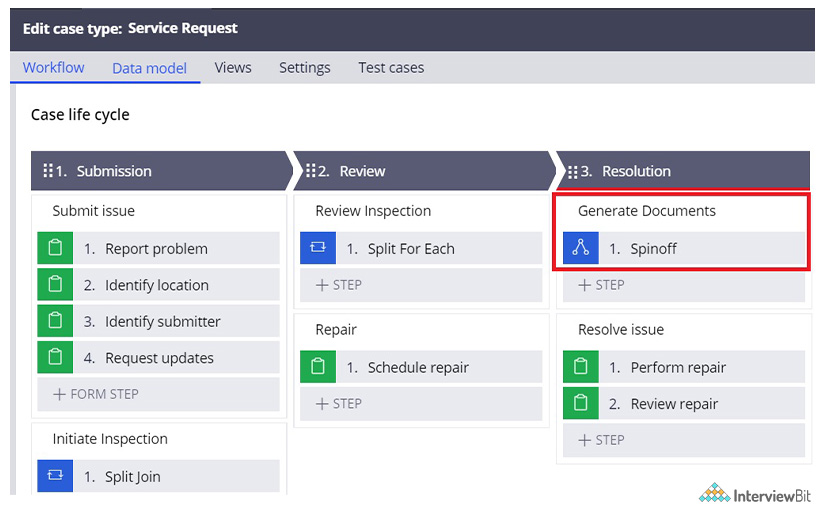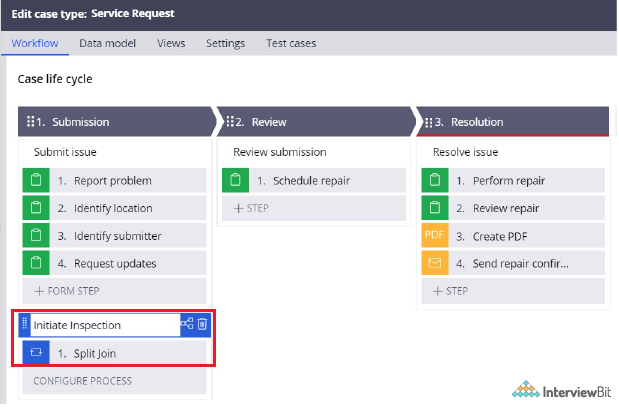Spinoff and Split join shape in pega
Explain Spinoff and Split join shape in the context of Pega.
Spinoff join shape:

When one flow execution starts another flow execution that runs asynchronously and independently of the first flow execution, this is known as a spinoff. The first flow does not pause or wait for the second flow's results. The second flow could work on the same or a different work item than the first flow.
At the workflow level, spinoffs enable parallel processing of work. While one department or business unit performs its functions for the work item at its own pace and according to its own flow, another department works on the same work item. Increased parallelism can reduce end-to-end resolution times, allowing for more efficient staffing and better customer service.
Split Join Shape:

On the Diagram tab of a flow rule, a Split Join shape can be found. This shape causes work item processing to divide into two or more distinct flow executions that run asynchronously and then rejoin later at runtime.
At the business process level, this capability allows for multitasking or parallel work processing. While one department or business unit performs its functions for the work item at its own pace and according to its own flow, another department works on the same work item. Similarly, if the split creates six subflows, each of them could be assigned to and worked on by six separate users who are all working on their assignments at the same time.
Spinoff and Split join shape
Split-Join shape to require that multiple subflows of your flow be completed before the current flow continues execution. This allows subflows to execute asynchronously, in parallel. For an example, see the standard flow Work-.ParallelWork.
Split For Each -
The Split-ForEach task provides a form of searching or enumeration over the pages in a property. Use a Split-ForEach shape to iterate over the pages of a Page List or Page Group property. For each page, you can conditionally start a flow execution for the work object.
Spinoff-
When a work object advancing through a flow reaches the Spin-off shape, Process Commander starts execution of a different flow, using the current or a different work object. Processing in the current flow rule continues in parallel, without waiting for the other flow to complete.
Spinoff // split join explain | PEGA Questions
When a work object advancing through a flow reaches the Spin-off shape, Process Commander starts execution of a different flow, using the current or a different work object. Processing in the current flow rule continues in parallel, without waiting for the other flow to complete.
the Split/Join shape ( ) onto the flow
Use the Split-Join shape to require that multiple subflows of your flow be completed before the current flow continues execution. This allows subflows to execute asynchronously, in parallel. For an example, see the standard flow Work-.ParallelWork.
Split-ForEach shape ( ) to any locations
The Split-ForEach task provides a form of searching or enumeration over the pages in a property. Use a Split-ForEach shape to iterate over the pages of a Page List or Page Group property. For each page, you can conditionally start a flow execution for the work object.

Comments
Post a Comment